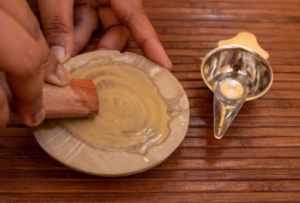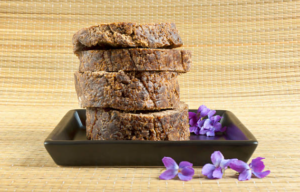Global Influences on Skincare

In the ever-evolving landscape of beauty, the clean beauty movement has taken center stage, transcending borders and cultures. Clean beauty is not just a trend but a global shift towards conscious skincare that goes beyond mere aesthetics. This blog explores how various cultural influences from around the world have shaped the clean beauty movement, transforming skincare routines into holistic rituals that prioritize both health and sustainability.
Clean beauty, characterized by products free from harmful chemicals, toxins, and artificial additives, has become a global phenomenon. What began as a localized movement in certain regions quickly gained traction, transcending geographical boundaries. The appeal of clean beauty lies in its commitment to promoting healthier skin, environmental sustainability, and a transparent approach to skincare.
Asian Wisdom: Traditional Ingredients
Asia, with its rich cultural heritage, has significantly influenced the global clean beauty movement. Traditional Asian skincare practices emphasize the use of natural ingredients that have stood the test of time. Ingredients like green tea, rice water, ginseng, and lotus have been cherished for their skincare benefits, inspiring a wave of clean beauty formulations worldwide.
- J-Beauty and K-Beauty Impact
Japanese and Korean beauty routines, often abbreviated as J-Beauty and K-Beauty, respectively, have gained immense popularity for their emphasis on simplicity and efficacy. These routines prioritize natural, plant-based ingredients and multifunctional products that align with the principles of clean beauty. From the 10-step Korean skincare routine to the minimalist approach of Japanese skincare, these practices have shaped the global perception of what constitutes a healthy skincare regimen.
Ayurvedic Elegance: India’s Clean Beauty
In India, the age-old science of Ayurveda has played a profound role in shaping clean beauty principles. Ayurvedic skincare emphasizes the balance between mind, body, and spirit, using botanical extracts, herbal remedies, and oils to promote holistic well-being. Ingredients like turmeric, neem, and sandalwood, celebrated for their healing properties, have found their way into clean beauty formulations worldwide.
- Bringing Ayurveda to the Global Stage
Ayurvedic brands and formulations have expanded beyond India, offering a natural and holistic approach to skincare. Clean beauty enthusiasts globally appreciate the Ayurvedic emphasis on individualized routines and the use of ingredients that have been cherished for centuries.
European Elegance: Eco-Conscious
Europe, with its chic elegance, has long been associated with natural beauty. Clean beauty in Europe emphasizes simplicity, relying on pure, potent ingredients sourced sustainably. French beauty, known for its minimalistic yet effective approach, has inspired clean beauty formulations that prioritize quality over quantity.
- Eco-Conscious Values in Scandinavia
Scandinavian countries, particularly Sweden and Denmark, have brought a strong focus on sustainability to the clean beauty movement. Brands from this region often prioritize eco-friendly packaging, ethically sourced ingredients, and a commitment to reducing environmental impact.
African Richness: Harnessing Nature’s Bounty
The beauty traditions of Africa, diverse and steeped in cultural heritage, have made a lasting impact on the clean beauty movement. Ingredients like shea butter, baobab oil, and African black soap, known for their nourishing and healing properties, have become staples in clean beauty formulations.
- Ethical Sourcing and Community Empowerment
Clean beauty brands that draw inspiration from African beauty traditions often engage in ethical sourcing practices, ensuring that communities benefit from the production of these natural ingredients. This approach aligns with the broader goals of clean beauty—promoting not only skin health but also ethical and sustainable business practices.

South American Vibrancy: Rainforest Treasures
The biodiversity of the Amazon rainforest and the indigenous beauty traditions of South America have significantly impacted the clean beauty movement. Ingredients like açaí, cupuaçu butter, and camu camu, known for their antioxidant-rich properties, have found their way into clean beauty formulations that celebrate the vibrancy of the region.
- Rainforest Conservation and Ethical Trade
Clean beauty brands inspired by South American beauty traditions often engage in initiatives that support rainforest conservation and ethical trade practices. By valuing the richness of the rainforest, these brands contribute to the preservation of biodiversity and indigenous knowledge.
Global Fusion: A Tapestry of Influences
Clean beauty, as influenced by diverse global traditions, is not about standardization but celebration. The movement acknowledges and appreciates the unique beauty philosophies from around the world, fostering a sense of unity in diversity. The global fusion of clean beauty creates a tapestry of influences, allowing individuals to curate skincare routines that resonate with their personal values and cultural backgrounds.
The Future of Clean Beauty: A Collaborative Journey
As the clean beauty movement continues to evolve, the emphasis on global collaboration becomes increasingly important. Beauty brands, regardless of their geographical origins, are recognizing the need for ethical sourcing, sustainability, and transparency. The future of clean beauty lies in a collective effort to create products that prioritize health, sustainability, and the celebration of diverse cultural influences.
In conclusion, clean beauty’s global journey is a testament to the collective understanding that beauty is not just skin deep—it is a reflection of cultural richness, environmental responsibility, and a commitment to holistic well-being. By drawing inspiration from beauty traditions around the world, the clean beauty movement invites individuals to embark on a skincare journey that transcends borders, embracing the beauty of diversity and sustainability.

